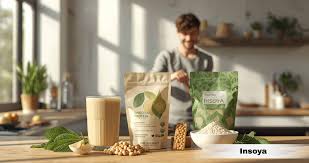How to Improve Soil Quality Naturally

Having good soil is important in order to have a successful garden. You can improve the quality of your soil naturally by following a few simple steps.
Table of Contents
Add organic matter
Adding organic matter or humate soil conditioner to your soil is an easy and natural way to improve its health. It is a good way to increase the amount of water held by the soil and increase its aeration. It can also improve soil structure and provide nutrients for plants.
Organic matter is comprised of plants, dead animals, yard debris, and microbes. It can be applied directly to the soil or mixed into it. Compost is another form of organic matter that helps improve soil conditions and aeration.
Adding organic matter to soil is beneficial to most garden plants. Organic matter contains nutrients such as nitrogen and phosphorus. Plants use these nutrients in different ways. Some plants fix nitrogen in the soil. Others bind excess nutrients in the soil.
Organic matter is also important because it improves the water holding capacity of coarse soils. A soil test can give you the information you need to know about the nutritional composition of your soil.
The benefits of adding organic matter to your soil are numerous. They include improved water retention, better aeration, and better soil structure. In addition, it can be used to improve agroforestry systems. It also can be used to reduce runoff.
Organic matter is a relatively small part of the soil compared to the minerals. In fact, organic material only accounts for about 5 percent of the volume of soil.
There are three types of organic matter: dead plant material, decomposed plant material, and living plant material. Each type has its own advantages. Plant material is important because it provides a habitat for beneficial soil organisms. Some grasses also improve the health of the soil.
Although adding organic matter is a relatively inexpensive and easy way to improve the health of your soil, it requires a sustained effort. The best results can be achieved by using erosion control techniques.
Avoid tilling
Using a rototiller can be a good way to improve the soil in your yard, but it can also have a negative impact. While tilling your soil does create a lot of loosening, the process can exacerbate soil erosion.
There are several methods that are proven to improve the quality of your soil, such as rotating crops and adding compost to the mix. One of the most effective ways to improve the soil in your yard is to avoid tilling in the first place. This will improve the soil in a number of ways, not just the visual appearance.
The best way to do this is to avoid using a rototiller on wet soil. This will help reduce compaction and ensure that the soil is properly fed. Aside from ensuring that your plants receive the nutrients they need, it will also help to prevent the spread of disease and pests.
There are other ways to improve the soil in your yard, such as planting cover crops. This will not only improve the soil in your yard, but it will also help to minimize weeds. If you are a true aficionado, you may even want to consider incorporating animal manure into your crop rotation. Not only is it a good way to improve the health of your soil, but it will also benefit your garden yields.
Lastly, the best way to improve the soil in your yard is to get rid of the weeds in your yard. A good way to do this is to implement a program of no-till farming. This will not only improve the health of your soil, but it will also make your life a lot easier in the long run.
Release sugars into the soil
Adding sugars to the soil improves the quality of the soil and stimulates plant growth. These sugars are produced by plants during photosynthesis and attract beneficial microbes to the root system. Several studies have investigated the effects of sugars added to the soil.
Sugars are the main source of carbon for root-associated microbes. These organisms are found in the soil’s rhizosphere, a region surrounding the roots of plants. They metabolize sugars and mine nutrients more efficiently than plant roots alone. They also extend the root’s reach.
The soil ecosystem is composed of microorganisms, macroorganisms, and minerals. Microorganisms consume and release excess nutrients to plants. They also use the soil organic matter as food. These organisms are a major part of the soil food web.
The soil ecosystem also serves as an anchorage for the root system. It helps insulate the roots from drastic temperature changes. It provides oxygen and water to plants. It also cools plants by evaporating off tissues. It also provides a food storage bank for beneficial bacteria.
Sugars are easily absorbed by mineral particles. Some sugars stimulate seed germination and root elongation. Some sugars may also be beneficial to microbes by feeding them.
Simple sugars are metabolized by microbes and may constitute 5 to 25 percent of total organic matter in most soils. They also form the basis of soil aggregates. Some studies have also shown that sugars stimulate plant growth.
The amount of labile organic matter in soil declines when microbial consumption exceeds input. This decline is accelerated by excessive tillage. Sugars are also important to plants, which release sugary exudates that feed beneficial bacteria.
Non-humic organic molecules include amino acids, proteins, and starches. These molecules are released from fresh residues, old plant roots, and insects. The heavier the polysaccharides in labile organic matter, the more likely it is to improve soil aggregation. They may also be important for water infiltration.
Rotate crops
Changing crops in a rotation can help to improve soil quality in many ways. This can include better soil structure, a higher soil organic matter content, and better water holding capacity. It can also help to combat erosion, reduce weed pressure, and control soil pests.
Typically, different crops require different nutrients. This is because different plants have different nutritional requirements and are susceptible to different pests and pathogens.
A properly designed rotation is a cost-saving strategy that can help to maintain crop yields while at the same time improving the quality of the product. It also reduces the need for synthetic fertilizers and herbicides.
Specifically designed rotations may also help to mitigate soil erosion, and to better control soil pests. In addition, they can protect farms against weak markets for a single commodity.
Several studies have been done on the effect of crop rotation on soil quality. These studies have shown that rotation has a positive effect on soil structure, organic matter, and soil aggregation processes.
However, there are limitations to these studies. For example, they do not account for how much of each nutrient a crop exports. Also, they do not account for how much of these nutrients are lost through leaching.
The most basic crop rotation may involve planting two or three different crops in the same field. A more complex system might include a dozen or more crops.
A classic rotation might include a corn/soybean combination, a corn/winter wheat combination, and a tomato crop. The classic rotation is better than monocultures because it reduces the number of weeds and pests that are growing in a field.
A complex rotation might include several years of corn, soybeans, wheat, and winter wheat. This could be supplemented by a rotation crop such as red clover or barley. These crops also help to replenish nitrogen in the soil.
Feed soil organisms
Increasing the amount of organic matter in the soil is one way to improve its quality. Organic matter helps to improve the texture of soil, promotes biodiversity, and is a good soil buffer. It also binds pollutants. It helps to hold positively charged nutrients in the soil, protects them from leaching, and improves drainage.
The microorganisms in the soil feed on plant tissue, organic residues, and exudates. They also produce waste products. These products are less decomposable than the original plant material, but they can be used by a variety of organisms.
Soil organisms are vital to the health of the soil and to the plants that grow in it. They help to break down organic matter into humus. They also release nutrients to plants. They act as food for plants and help to control harmful soil organisms.
They help to improve soil health by improving nutrient availability to plants. In addition, they help to control the growth of pathogens, predators, and parasites. They also play a role in controlling soil pollution by breaking down organic matter into humus.
Soil organisms also enhance the structure of the soil. They create pockets within the soil that allow for air and water to reach the roots. The pockets also improve drainage. Earthworms and ants are able to move soil and create macropores.
Beneficial soil organisms include arbuscular mycorrhizal fungi. These fungi form symbiotic relationships with plant roots and provide them with sugars. They also help plants to access phosphorus in the soil. They help reduce the impact of raindrops on the soil structure.
The amount of organic matter in the soil depends on several factors, including climate, soil type, and soil management practices. Labile organic matter accounts for 5-20% of the total soil organic matter. This pool contains relatively simple organic compounds that enhance aggregate stability.




